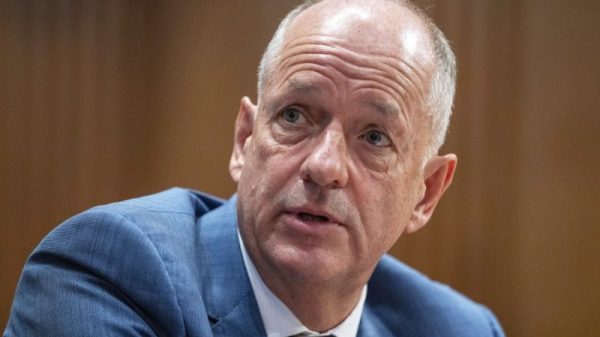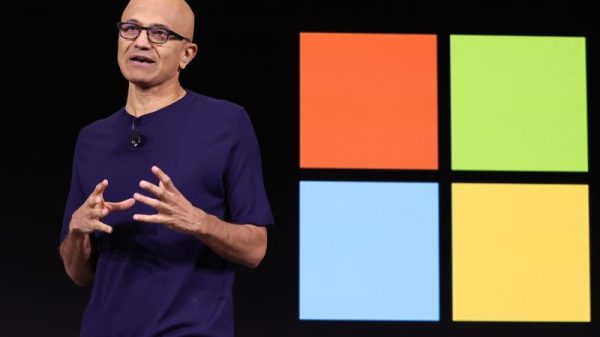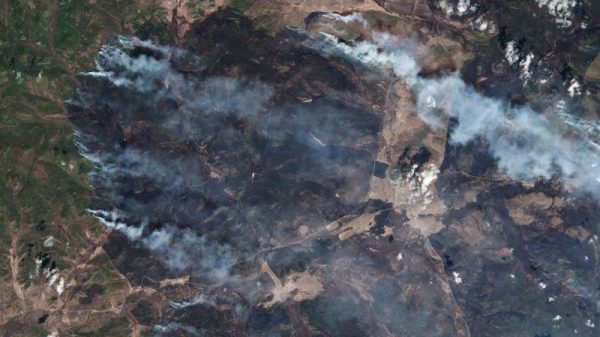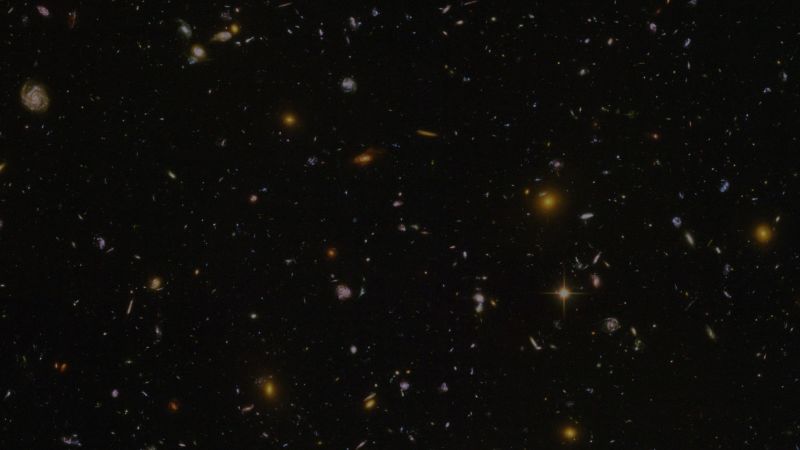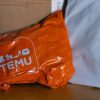A box-shaped cloud of opaque dust that lies at the center of our galaxy has long perplexed scientists, and observations that reveal a new detail about its composition are deepening the mystery — possibly upending what’s known about how stars form.
The cloud, nicknamed “the Brick” for its visual impenetrability and rectangular appearance, was previously estimated to hold more than 100,000 times the mass of the sun. And such a dense blob should be churning out massive new stars, based on researchers’ current understanding of star formation.
But it’s not.
The Brick is largely dormant. And the latest observations, made using the James Webb Space Telescope, did not reveal any hidden, young stars.
The new Webb data instead unveiled that the Brick is not just made up of gas. It’s also littered with frozen carbon monoxide — much more than previously expected — according to a study published Monday in The Astrophysical Journal. And there’s more ice forming deeper into the Brick.
The findings could have drastic implications for how scientists analyze this region going forward. More carbon monoxide ice inside the Brick could dramatically change how researchers study and measure dark clouds in the center of the Milky Way.
“We are (now) closer to understanding what exactly is happening in the Brick and where the mass is,” said University of Florida astronomer Adam Ginsburg, lead author of the study. “But we opened more questions than we closed with this.”
Among those questions: Why and where is this carbon monoxide freezing into ice?
Other mysteries that loom for this region remain unanswered as well: Why can’t we see any new stars forming? Is the Brick not as dense as scientists once believed? And what are the strange ridge- and filament-like features that show up within the Brick?
“We have more to investigate before we can really be sure what’s going on,” Ginsburg said. “I would say we’re in the hypothesis-forming phase, not the drawing conclusions phase.”
What Webb revealed
Ginsburg and his fellow researchers, which included University of Florida graduate students, first got their hands on this new Webb data in September 2022.
It was a crucial moment. As the most powerful space telescope ever constructed, Webb could offer never-before-seen insights into the Brick. But right off the bat, Ginsburg and his team found the data needed a lot of work. The Webb telescope orients itself using a map, determining which direction it’s pointing by referencing where it is in relation to known stars.
The trouble was, “there’s so many stars at the galactic center that it gets confused,” Ginsburg said. So, researchers had to spend months cleaning up the data, orienting it to line up correctly with the existing maps of the sky.
Then, as they peered at the Brick, they found that the images from Webb were turning out the wrong color.
“All the stars were coming out a bit too blue,” Ginsburg said, prompting researchers to wonder if something was wrong with the data.
But it turned out, he said, the problem was with their assumptions. The scientists hadn’t expected there to be so much carbon monoxide ice — and that was the cause of the color change, according to the study.
Learning of the existence of the ice could have broad ripple effects for all kinds of research into the center of the Milky Way, said Dr. Natalie Butterfield, an assistant scientist at the National Radio Astronomy Observatory, who was not involved in the study.
Butterfield said her own research — which includes studying supernovae and the radiation between star systems — could be forever altered by understanding the existence of this carbon monoxide ice. It could change how scientists estimate the mass of all the clouds in the galactic center.
Why carbon monoxide matters
There are several perplexing things about all this carbon monoxide ice. For instance, the area is fairly warm — around 60 Kelvin (minus 351.67 degrees Fahrenheit) — while carbon monoxide typically freezes at 20 Kelvin.
It could be that the dust inside the Brick is much colder than the gas, causing the carbon monoxide around the dust particles to turn solid. Or, Ginsburg said, it could be that water is freezing, trapping carbon monoxide inside.
The answer matters.
All the ice in a region such as the Brick can give scientists new insight into our solar system — even our home planet.
The ice and water that exist on Earth, for example, likely arrived here via comets. So, where ice exists in the universe and how it forms can help researchers understand where these comets come from and how they collected the materials they deposited.
Where are the stars?
And then there is the big mystery of why there is a lack of star formation within the Brick.
Scientists already know that new stars are brewed from dust clouds and hydrogen molecules. But scientists cannot directly observe hydrogen molecules within the Brick — or anywhere else in the universe — because they’re invisible to telescopes.
However, scientists also know that for every hydrogen molecule, there’s likely a certain amount of carbon monoxide. And carbon monoxide is visible — so scientists can measure it as a proxy for identifying how many hydrogen molecules are in a given area.
Researchers have been using this method for measuring hydrogen molecules for 50 years, Ginsburg said.
But they’ve always assumed the carbon monoxide was gas — not solid ice, as the Webb data revealed. This finding opens a whole new can of worms, Ginsburg said.
Ginsburg noted that it’s crucial for researchers to understand what state of matter the carbon monoxide is in — gas or solid — to arrive at the right answers.
Every new piece of knowledge about the Brick and its makeup better informs why this opaque cloud isn’t producing stars, even though — by most accounts — it should be one of the most active star nurseries in the galaxy.
“It’s a really natural place for new stars,” Ginsburg said. “But we haven’t found very many — only a very, very tiny handful.”
There are some possible answers that Ginsburg and other researchers are anxious to explore: Perhaps the Brick is more spread out — less compact — than scientists once thought. Or maybe it’s just too young, and its star-forming days are ahead.
Those are questions, Ginsburg and Butterfield said, that Webb can continue to help researchers answer.
“It’s just an impressive, impressive telescope,” Butterfield said. “I think this is just the first of many unique results that will be coming out of the JWST for the galactic center.”









